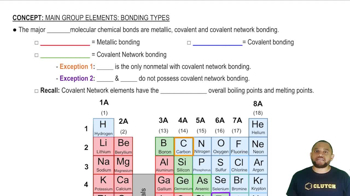Textbook Question
The following diagrams illustrate p-p orbital overlap or s-porbital overlap. Which diagram represents a p bond in valencebond theory? (LO 8.3)(a) (b) (c) (d)
656
views

 McMurry 8th Edition
McMurry 8th Edition Ch.8 - Covalent Compounds: Bonding Theories and Molecular Structure
Ch.8 - Covalent Compounds: Bonding Theories and Molecular Structure Problem 8
Problem 8
 Verified step by step guidance
Verified step by step guidance


